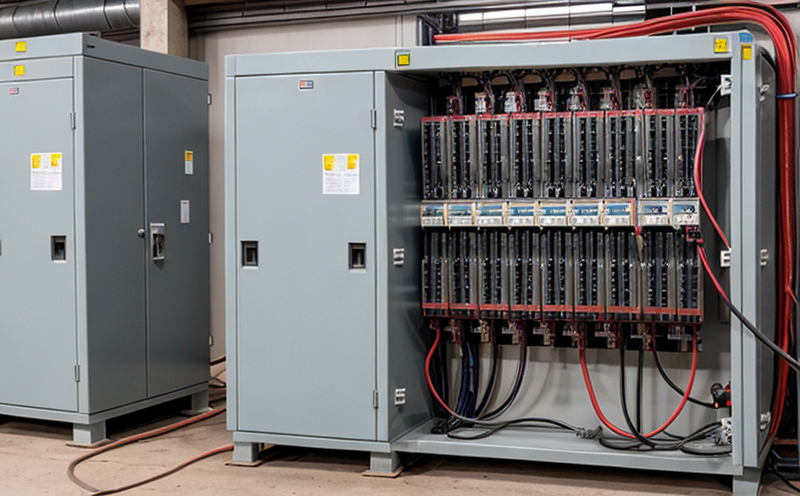IEC 62271-212 Compact Switchgear Performance Testing
The IEC 62271-212 standard is a critical technical document that governs the performance requirements for compact switchgear. This standard ensures that switchgear meets high safety and reliability standards, which are essential in modern power distribution systems. Compliance with this standard is mandatory for manufacturers aiming to enter international markets where stringent quality and safety regulations prevail.
Compact switchgear plays a crucial role in ensuring the efficient operation of electrical networks by providing protection against overcurrents, short circuits, and other faults. The performance testing outlined in IEC 62271-212 is designed to ensure that switchgear behaves predictably under various operating conditions and stress scenarios. This includes tests for short-circuit strength, interrupting capacity, withstand voltage, and insulation integrity.
The testing process involves several steps that are critical for ensuring compliance with the standard. Specimen preparation typically includes verifying all electrical connections, checking terminal markings, and ensuring that all components are in their specified state before testing begins. Instrumentation used during these tests includes high-voltage discharge equipment, current measurement devices, and temperature monitoring systems.
Testing procedures begin with short-circuit strength tests to evaluate the switchgear's ability to withstand and interrupt a short circuit without damage or degradation. This involves applying a controlled fault condition for a specified duration. The next step is an interrupting capacity test, which assesses the ability of the switchgear to safely interrupt rated current under normal operating conditions.
Withstand voltage tests are conducted to ensure that the insulation material and other components can withstand specified voltage levels without failure. Temperature rise tests verify that the components do not exceed their maximum allowable temperature during operation. Other tests include dielectric strength testing, which checks for breakdown of insulating materials under applied voltages.
The results of these tests are meticulously documented in a comprehensive report that includes all test parameters, specimen preparation details, instrumentation used, and detailed findings. Compliance with IEC 62271-212 ensures that switchgear meets the highest international standards for performance, safety, and reliability.
Why It Matters
The importance of IEC 62271-212 Compact Switchgear Performance Testing cannot be overstated. In an increasingly interconnected world, power distribution systems must be reliable and safe. Compliance with this standard ensures that switchgear meets the stringent requirements set by international standards bodies.
Non-compliance can lead to significant operational disruptions, safety hazards, and costly repairs or replacements. Moreover, failure to adhere to these standards can result in legal penalties and damage to a company's reputation. By ensuring compliance through rigorous testing, companies can avoid these pitfalls and maintain their competitive edge.
The standard is particularly important for manufacturers targeting international markets where strict adherence to safety regulations is mandatory. Compliance also demonstrates a commitment to quality and customer satisfaction, which are crucial factors in building long-term relationships with clients.
Customer Impact and Satisfaction
Customers who choose products from companies that comply with IEC 62271-212 can rest assured of the highest levels of safety and reliability. This compliance ensures that switchgear meets stringent performance requirements, providing peace of mind to end-users.
The testing process is designed to identify potential weaknesses or areas for improvement in the design and manufacturing processes. By addressing these issues proactively, companies can enhance product quality and reduce the risk of failures in the field. This proactive approach not only improves customer satisfaction but also fosters trust and loyalty among clients.
Use Cases and Application Examples
- Testing for short-circuit strength to ensure reliable operation under fault conditions.
- Evaluating interrupting capacity to verify safe interruption of rated current.
- Assessing withstand voltage capability to prevent insulation breakdown.
- Verifying temperature rise limits to ensure components do not exceed their maximum allowable temperatures.
| Test Procedure | Description | Expected Outcome |
|---|---|---|
| Short-Circuit Strength Test | Apply a controlled fault condition for specified duration. | Evaluate switchgear's ability to withstand and interrupt the short circuit without damage. |
| Interrupting Capacity Test | Subject switchgear to rated current under normal operating conditions. | Determine the safe interruption capability of the switchgear. |
| Withstand Voltage Test | Apply specified voltage levels to test insulation integrity. | Evaluate the ability of insulating materials to withstand applied voltages without failure. |
| Temperature Rise Test | Monitor temperature during operation to ensure it does not exceed maximum limits. | Determine if components remain within safe operating temperatures. |





